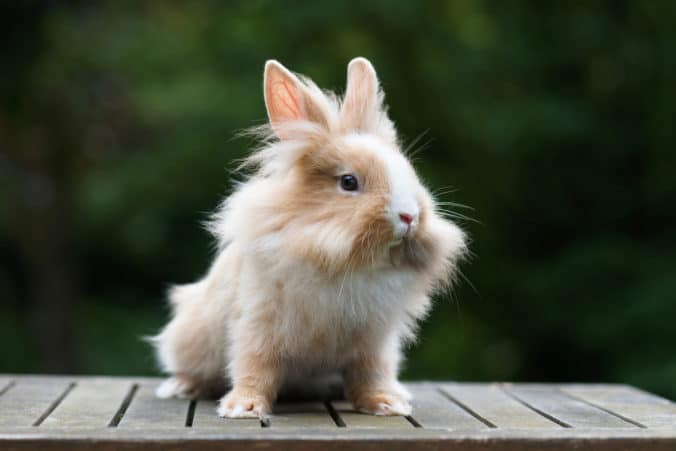
Breed facts
Size
1,13-1,58 kg
Look
Distinctive flyaway coat, with particularly long and unruly fur around their head and rear.
Temperament
Energetic, affectionate, and loves to play. Can be fearful if they don't feel safe.
Grooming
Needs a lot of grooming and fur care because the fur can easily get matted or tangled.
Behavior With Children
Excellent pets for children because they are very amenable to being picked up and carried. They are very sociable creatures.
Health Concerns
Nothing beyond general rabbit health issues.
Life expectancy
7–10 years
Breed facts
Size
1,13-1,58 kg
Look
Distinctive flyaway coat, with particularly long and unruly fur around their head and rear.
Temperament
Energetic, affectionate, and loves to play. Can be fearful if they don't feel safe.
Grooming
Needs a lot of grooming and fur care because the fur can easily get matted or tangled.
Behavior With Children
Excellent pets for children because they are very amenable to being picked up and carried.They are very sociable creatures.
Health Concerns
Nothing beyond general rabbit health issues.
Life expectancy
7–10 years
Breed facts
Size-4 to 7,5 kg
Temperament-calm and friendly with a playful personality
Grooming-they need to be groomed frequently due to their long, double coat that mats easily
Behavior with children-they get along very well with children and babies due to their kind, friendly, and fun personality
Health Concerns-Brachycephaly-it is a malformation of the skull due to their breeding; heart disease, eye issues (caused by eye irritations and excess discharge); hair issues (they don't have fur, they have long hair with can tangle easily); ear issues( ear infections); skin sensitivity (allergies) and they also might develop a stomach sensibility due to their selective appetite
Life expectancy-10 to 16 years (the oldest recorded Shih Tzu has lived 23 years)
Breeders in Belgium crossed a Swiss Fox with a Netherland Dwarf to create this breed.
The Lionhead, a bunny with longer hair around its face and rear, was created as a result of a genetic mutation known as the "mane" gene.
The breed eventually found its way to the United States in the 1990s, where it was recognized by the American Rabbit Breeders Association in 2014.
Lionheads are a lively and friendly breed that make excellent pets, especially for people with children. They do, however, require more grooming and attention than other breeds.
”Typically, the mane is thick, woolly and soft with evident "crimping". Depending on the number of genes a Lionhead gets from each parent, it can have a double mane (two mane genes) or a single mane (one mane gene).”
”The only way to tell if a rabbit is single mane or double mane is when it is first born. A double mane Lionhead will have a noticeable V form around their skirt/flanks, while a single mane will look like a common rabbit directly after birth.”
”Past then, many factors contribute to how much mane each individual actually ends up having including chewing on the mane by themselves or others and matts.”
Breeders in Belgium crossed a Swiss Fox with a Netherland Dwarf to create this breed. The Lionhead, a bunny with longer hair around its face and rear, was created as a result of a genetic mutation known as the "mane" gene. The breed eventually found its way to the United States in the 1990s, where it was recognized by the American Rabbit Breeders Association in 2014. Lionheads are a lively and friendly breed that make excellent pets, especially for people with children. They do, however, require more grooming and attention than other breeds.
”Typically, the mane is thick, woolly and soft with evident "crimping". Depending on the number of genes a Lionhead gets from each parent, it can have a double mane (two mane genes) or a single mane (one mane gene).”
”The only way to tell if a rabbit is single mane or double mane is when it is first born. A double mane Lionhead will have a noticeable V form around their skirt/flanks, while a single mane will look like a common rabbit directly after birth.”
”Past then, many factors contribute to how much mane each individual actually ends up having including chewing on the mane by themselves or others and matts.”



